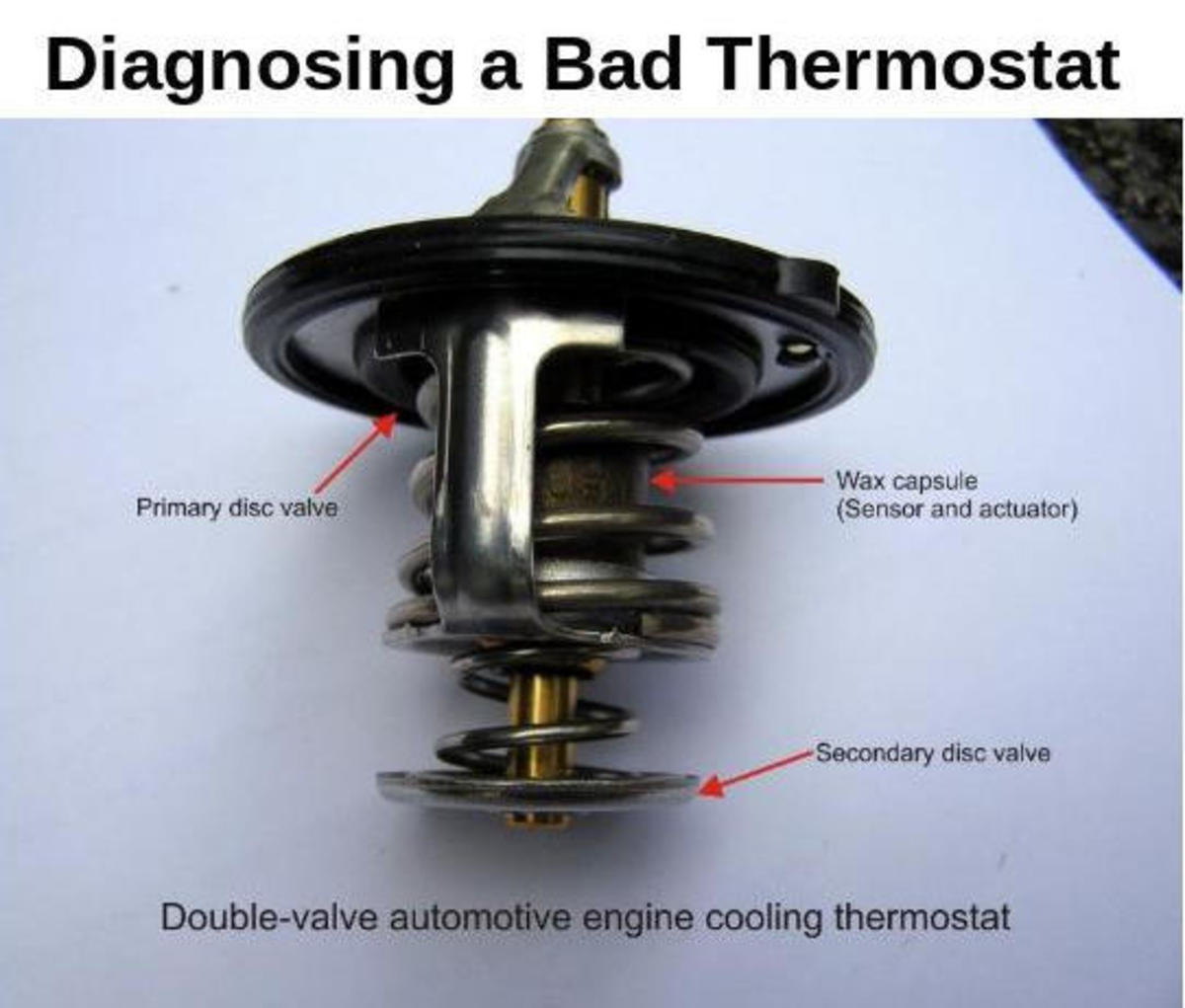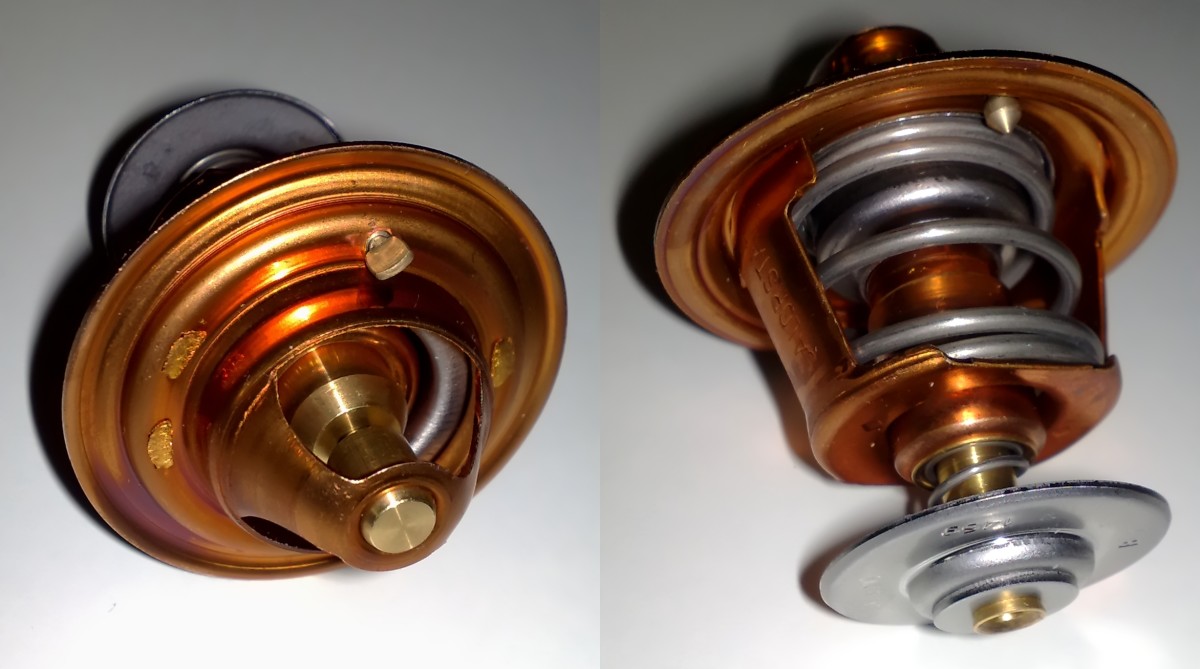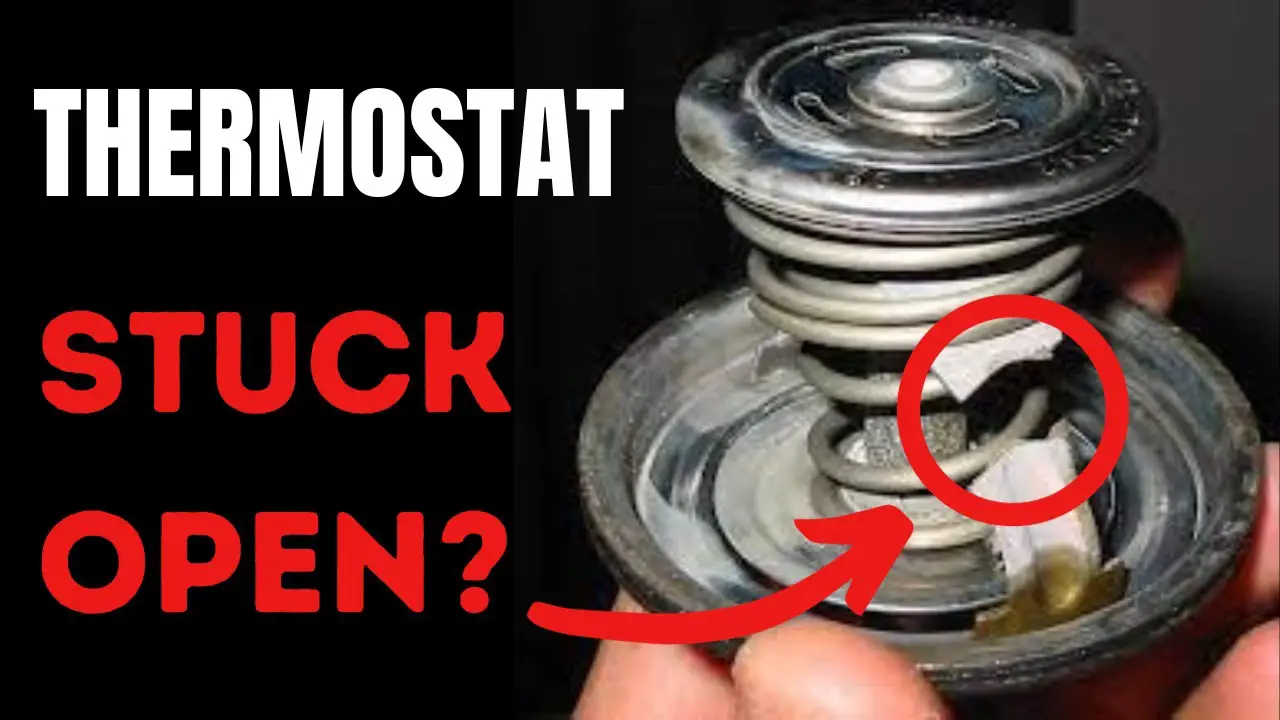Check Best Thermostat Pricing in Amazon
** As an Amazon Associate, I earn from qualifying purchases.
Is your car’s engine running hotter than usual, or maybe it’s taking too long to warm up? These could be signs that your thermostat is stuck open.
A malfunctioning thermostat can lead to a host of problems, affecting your vehicle’s performance and efficiency. But how can you tell if the thermostat is the culprit? We’ll guide you through simple steps to diagnose the issue and help you understand the symptoms to watch out for.
By the end, you’ll have the knowledge to tackle this problem head-on, saving you time and potential repair costs. Dive in, and let’s uncover the signs that could indicate your thermostat is stuck open.

Credit: discover.hubpages.com
Symptoms Of A Stuck Open Thermostat
Ever found yourself shivering in the car despite cranking up the heater, or noticing your engine takes forever to warm up? These could be signs of a stuck open thermostat. Knowing how to identify these symptoms can prevent bigger problems down the road. Let’s dive into the tell-tale signs your thermostat might be stuck open.
Engine Takes Longer To Warm Up
Imagine starting your car on a chilly morning, expecting it to warm up quickly, only to find it takes longer than usual. This could be a result of a stuck open thermostat. When the thermostat is open, coolant flows continuously, preventing the engine from reaching its optimal temperature swiftly. Have you noticed that your car remains cold even after a long drive? It’s worth checking the thermostat.
Unusual Temperature Gauge Readings
Your car’s temperature gauge is like a health monitor for your engine. If you see erratic or consistently low readings, it might be signaling a problem. A stuck open thermostat can cause the gauge to show cooler temperatures than normal. Pay attention to these readings. They can be your first clue that the thermostat isn’t closing properly.
Decreased Heater Performance
Picture this: you’re driving in winter, and your heater seems less effective than usual. This lack of warmth can be frustrating, and it might be due to a stuck open thermostat. With the thermostat not functioning properly, the coolant doesn’t get hot enough to warm the air passing through the heater core. Have you experienced your heater blowing lukewarm air instead of the toasty warmth you expect?
These symptoms can sneak up on you. Being aware of them can save you from unexpected breakdowns or costly repairs. Is your car showing any of these signs? Don’t ignore them, as addressing them early can keep your vehicle running smoothly and keep you comfortable on the road.
Causes Of A Stuck Open Thermostat
Understanding the causes of a stuck open thermostat is crucial. This issue can lead to engine inefficiency and increased fuel consumption. Let’s explore the common reasons why a thermostat might get stuck open.
Mechanical Malfunctions
Mechanical issues often cause thermostats to stick open. The thermostat may fail due to a faulty spring. Another reason could be a weak or broken seal. Both prevent proper operation. This can lead to the thermostat staying in an open position.
Debris Or Foreign Objects
Debris can affect thermostat function. Dirt or sludge can lodge in the thermostat. This can stop it from closing properly. Even small particles can create big problems. Keeping the system clean is essential.
Thermostat Age And Wear
Over time, thermostats wear out. An old thermostat might not function well. Wear and tear weaken its components. This can lead to it sticking open. Regular checks can prevent this issue. Consider replacing an aging thermostat.
Testing The Thermostat
A stuck thermostat can lead to overheating or engine issues. Check for high temperature readings or leaks. Listen for unusual sounds from the cooling system. Adjusting the thermostat may resolve the problem.
Testing your car’s thermostat can be quite enlightening. Is your engine overheating or taking forever to warm up? These could be signs that your thermostat is stuck open. By performing a few simple tests, you can get to the bottom of the issue. Let’s dive into some practical methods to test your thermostat and ensure your vehicle is running smoothly.Visual Inspection
Start with a straightforward visual inspection. Pop the hood and locate your thermostat housing, usually found between the engine and radiator. Look for any signs of leaks or corrosion around the housing. These could indicate a malfunction. If your thermostat is stuck open, the engine might run cooler than expected, so check if the radiator hoses are warming up too quickly after starting the engine.Boiling Water Test
Remove the thermostat from the housing for a more hands-on approach. Grab a pot of water and heat it until it boils. Carefully submerge the thermostat in the boiling water. A functioning thermostat should close as it reaches the water’s temperature. If it stays open, it’s time for a replacement.Thermal Camera Analysis
A thermal camera can be an excellent tool for this task. Start your engine and let it run for a few minutes. Use the camera to scan the temperature distribution across the radiator and engine. A stuck-open thermostat will result in a uniform temperature, since the coolant is constantly flowing. Have you ever wondered if a simple tool could save you costly repairs? A thermal camera might just be your new best friend. It allows you to see the unseen and get a clear picture of what’s happening under the hood. By applying these practical tests, you can quickly pinpoint if your thermostat is stuck open. Don’t ignore the signs; your engine’s health depends on it.Tools Needed For Diagnosis
Diagnosing a thermostat stuck open requires a few simple tools. A thermometer checks engine temperature, while a flashlight helps inspect the thermostat housing. A basic socket set is useful for removing the thermostat for a closer look.
Diagnosing a stuck thermostat in your vehicle can be a straightforward task if you have the right tools. Understanding the essentials will save you time and prevent any unnecessary frustration. Let’s dive into the key tools you’ll need to figure out if your thermostat is stuck open.Basic Hand Tools
Start with a set of basic hand tools that you probably already have. A socket set and a wrench are vital to access the thermostat housing. These tools will help you remove any bolts or nuts securely holding the thermostat in place. Screwdrivers come in handy for those hard-to-reach clamps or covers. Make sure you have both flathead and Phillips types. Remember, a good grip saves you from slipping and potential injury.Thermal Imaging Tools
Thermal imaging tools might sound advanced, but they’re incredibly useful. They allow you to visualize temperature differences in your engine. You can quickly spot if your engine is not heating up as it should, indicating a possible stuck thermostat. Investing in a basic thermal camera can pay off. It’s like having X-ray vision for your car’s heating system. Imagine catching issues before they become costly repairs.Digital Thermometer
A digital thermometer is an affordable and effective diagnostic tool. It gives you precise temperature readings of your engine’s coolant. Simply point it at your radiator or hoses and see if the temperatures match expected norms. Using a digital thermometer is straightforward. Once, I found that my coolant temperature wasn’t increasing, which led me to discover a thermostat stuck open. It’s a small tool that provides valuable insights into your vehicle’s health. Have you ever wondered if diagnosing a car issue could be this simple? With these tools, you can confidently tackle the mystery of a stuck thermostat. Keep your vehicle running smoothly and avoid unexpected breakdowns.Steps To Replace A Faulty Thermostat
Replacing a faulty thermostat is crucial for a car’s engine health. A stuck thermostat can lead to overheating or inefficient cooling. Follow these steps to ensure a smooth replacement process and keep your engine running efficiently.
Draining The Cooling System
Begin by parking the car on a flat surface. Ensure the engine is cool to avoid burns. Locate the radiator drain plug at the bottom of the radiator. Place a drain pan beneath it to collect the coolant. Carefully remove the plug to allow the coolant to drain completely. This step prevents spills when removing the thermostat.
Removing The Old Thermostat
Find the thermostat housing by tracing the upper radiator hose to the engine. It is usually attached to the engine block. Use a wrench to loosen the bolts securing the housing. Gently lift the housing off to reveal the thermostat. Take note of how the thermostat is positioned, then remove it from its seat.
Installing The New Thermostat
Before installing the new thermostat, compare it with the old one. Ensure it matches in size and shape. Position the new thermostat correctly in its seat, following the orientation of the old one. Reattach the thermostat housing and tighten the bolts securely. Double-check for any leaks before refilling the cooling system.

Credit: discover.hubpages.com
Check Best Thermostat Pricing in Amazon
** As an Amazon Associate, I earn from qualifying purchases.
Preventive Maintenance Tips
Maintaining a car’s cooling system ensures a smooth and safe drive. Regular checks and using quality products can prevent thermostat issues. Follow these tips to keep your thermostat in top shape.
Regular Cooling System Checks
Inspect your cooling system every few months. Look for leaks or corrosion. Check the coolant level and condition. A consistent routine helps catch issues early.
Using Quality Coolants
Use high-quality coolant for better performance. Cheap coolants may cause deposits in the system. These deposits can harm the thermostat. Quality coolants have additives to protect the engine. Always follow the manufacturer’s recommendations.
Scheduled Thermostat Replacements
Replace the thermostat as per the car’s manual. A timely replacement prevents unexpected failures. Old thermostats may stick open or closed. This can lead to overheating or poor fuel economy.
When To Consult A Professional
Knowing when to consult a professional can save you time and potentially prevent further issues when dealing with a stuck-open thermostat. While there are simple checks you can do yourself, some situations demand expert attention. You might have started noticing consistent overheating or a mysterious drop in performance, leaving you puzzled. It’s at these moments that a professional can offer clarity and solutions.
Complex Diagnostic Needs
Sometimes, diagnosing a stuck-open thermostat isn’t straightforward. You may have checked the coolant levels, but the problem persists. A professional has the experience and tools to perform complex diagnostics that go beyond basic troubleshooting. They can pinpoint issues that might not be visible to the untrained eye. Ever wondered why your car’s engine still feels hot despite the thermostat being open? An expert can help unravel this mystery.
Persistent Overheating Issues
If your vehicle continues to overheat even after you’ve tried everything, it’s time to seek professional help. Persistent overheating can lead to severe engine damage if not addressed promptly. Don’t wait until you see smoke or hear unusual noises. A professional can assess whether the thermostat is the root cause or if there’s a deeper issue at play. Has your car overheated more than once this week? Consider it a sign that expert intervention is necessary.
Lack Of Necessary Tools
Not everyone has a fully equipped garage at their disposal. You might lack the tools required to accurately diagnose or fix a thermostat issue. Professionals have access to specialized equipment that can make the task easier and more reliable. They can perform tests that require precision, ensuring that your vehicle returns to optimal functioning. How often have you struggled with a simple repair due to missing tools? Sometimes, having the right equipment makes all the difference.
Deciding when to consult a professional can be crucial. It’s not just about fixing a problem; it’s about preserving your vehicle’s health and your peace of mind. What steps will you take to ensure your vehicle runs smoothly? Remember, seeking expert advice can often be the best decision for both novice and seasoned vehicle owners.

Credit: www.youtube.com
Frequently Asked Questions
What Are The Symptoms Of A Stuck Open Thermostat?
A stuck open thermostat can cause engine overheating or running too cool. You may notice poor fuel efficiency. The heater might not work properly, and the temperature gauge could show lower than normal readings. Engine performance might decrease due to improper operating temperatures.
How Do You Tell If A Thermostat Is Open Or Closed?
Check if the engine temperature rises quickly; this indicates a closed thermostat. Feel the radiator hoses; a warm upper and cold lower hose suggest a closed thermostat. A consistent engine temperature with both hoses warm means the thermostat is open.
Use a thermometer for precise temperature readings.
How Do You Unstick An Open Thermostat?
Turn off the engine and let it cool. Remove the thermostat housing and inspect the thermostat. Clean any debris or corrosion. Replace the thermostat if stuck or damaged. Reassemble the housing securely, ensuring no leaks. Restart the engine and check for proper functioning.
What Will Happen If The Thermostat Valve Is Stuck In Open Position?
A stuck-open thermostat valve causes the engine to run cooler than optimal. This reduces fuel efficiency and increases emissions. Prolonged operation can lead to engine wear and potential damage. Regular checks can prevent issues.
Conclusion
Identifying a stuck-open thermostat is crucial for engine health. Look for signs. Overheating or fluctuating temperatures indicate issues. Regular checks can prevent costly repairs. A functioning thermostat ensures efficient engine performance. Keep an eye on coolant levels. Listen for strange engine noises.
Address problems promptly to maintain safety. Simple fixes often restore normal operation. Don’t ignore warning signs. Stay informed and proactive with vehicle maintenance. Regular attention keeps your car running smoothly. Ensure long-term reliability by checking components regularly. A little effort saves money and stress.
Happy driving!
Check Best Thermostat Pricing in Amazon
** As an Amazon Associate, I earn from qualifying purchases.


